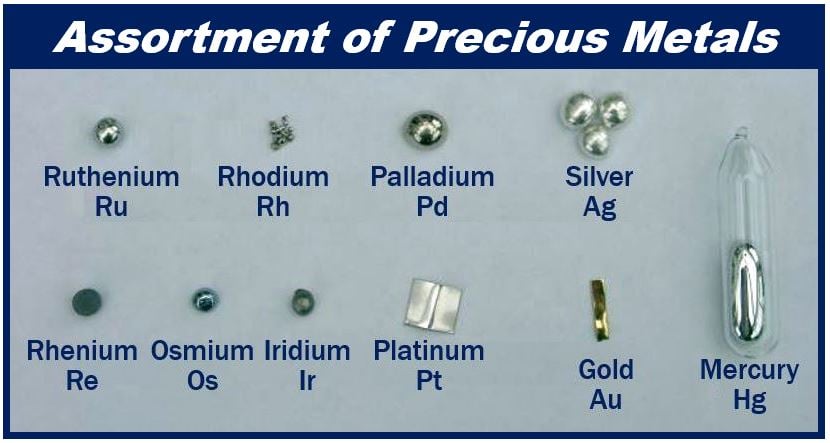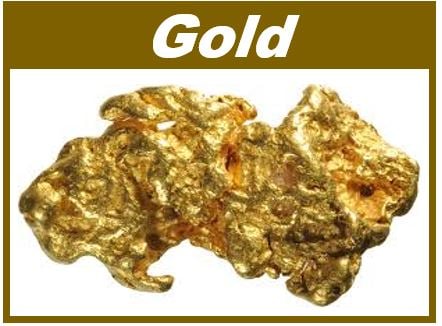Precious metals are metals that are expensive and rare, either because of their usage in, for example, industry, or their scarcity. Some precious metals, such as gold or silver, historically have had significant store value.
Investors across the world are especially interested in gold, silver, and platinum.

Most precious metals are less reactive than the majority of elements, i.e., they are noble metals. A reactive element is one that easily undergoes a chemical reaction with other materials or by itself. During the reaction, there is a release of energy. This means that precious metals resist most kinds of chemical and environmental attack.
Precious metals – more than just gold and silver
When most of us hear the term precious metals, we tend to think of bullion, i.e., gold bars, or jewelry. The precious metals marketplace, however, is considerably more than that.
Precious metals are extensively used in the following sectors:
- Jewelry
- Automotive manufacturing
- Electronics
- Chemicals and petrochemicals
- Pharmaceuticals
- Fertilizer production
- Glass industry
- Solar power
- Investment
- Dentistry
- Electrochemistry
- Coins
- Catalysts
- Sensors
- Chemotherapy
List of precious metals
- Beryllium
- Bismuth
- Gallium
- Germanium
- Gold
- Indium
- Iridium
- Mercury
- Osmium
- Palladium
- Platinum
- Rhenium
- Rhodium
- Ruthenium
- Silver
- Tellurium
Brief description of 4 precious metals
Gold

We have been using and investing in gold for a very long time – several thousand years. Of all the metals, it is the most malleable, i.e., it can be pressed or hammered into different shapes without cracking or breaking.
Gold’s relatively low melting point meant that it could be readily be cast with fairly basic technology.
Silver
We commonly refer to silver as the white metal. Of all the metals we know of, silver has the best room-temperature thermal and electrical conductivity. Silver’s ease of fabrication and low melting point have made it an attractive choice for electrical applications.
Of all the precious metals, silver is the least costly and most available. Its non-toxic and antimicrobial qualities make it popular in the production of consumer products as well as in the medical field.
Silver’s brilliant shine and high reflectivity make it a top choice for jewelry, silverware, and mirrors. Its ability to be easily flattened into sheets (malleability) and drawn into thin, flexible wires (ductility) makes it highly useful in a wide range of industrial applications. Additionally, its sensitivity to light (photosensitivity) has made it a valuable material in film photography.
Platinum
Platinum, which is used extensively in jewelry, is a beautiful silvery-white malleable metal. It used to be known as white gold. It is also used by makers of wires, various types of medical devices, lab vessels, and anticancer medications. It is used in dentistry, for electrical contacts, magnets, and corrosion-resistant products.
At 21.45 grams per cubic centimeter (12.4 ounces per cubic inch), it is one of the densest elements on Earth. Platinum has six and twenty-one times the density of a diamond and water respectively.
Iridium
Iridium, which is nearly as unreactive as gold, is a hard, silvery metal with a relatively high melting point. It is the most corrosion-resistant material we know of and one of the rarest elements on earth.
Companies use it in special alloys to make a variety of products including compass bearings and pen tips. Its high melting point and resistance to spark erosion makes it ideal for the production of sparks plugs.
